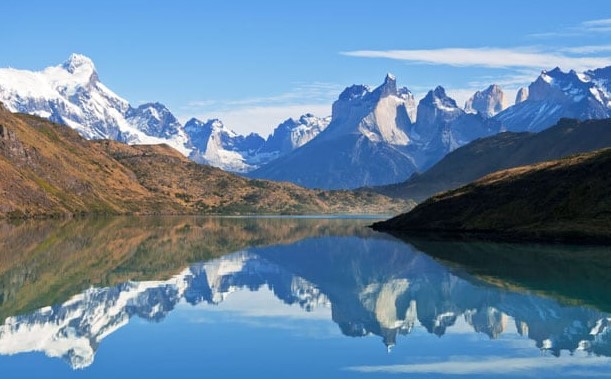Patagonia, South Africa: Where Two Worlds Collide

Source : https://www.telegraph.co.uk
Patagonia, South Africa: Where Two Worlds Collide is a unique geographical region where the stark contrasts of nature meet. This area, located at the southernmost tip of South Africa, is a convergence point of the Atlantic and Indian Oceans, creating a rich biodiversity both on land and underwater. It is characterized by its dramatic landscapes, ranging from rugged coastlines and mountain ranges to vast plains and lush forests. The region is also home to a diverse array of wildlife and plant species, making it a haven for nature enthusiasts and researchers alike. The cultural heritage of Patagonia, South Africa is equally diverse, with influences from indigenous tribes and European settlers. This place truly represents a collision of worlds, where natural beauty and cultural richness coexist in harmony.
Exploring the Unique Blend of Cultures in Patagonia, South Africa: Where Two Worlds Collide
Patagonia, South Africa, is a place where two worlds collide, creating a unique blend of cultures that is as captivating as it is diverse. This region, located at the southernmost tip of the African continent, is a melting pot of indigenous African and European influences, resulting in a rich tapestry of traditions, languages, and cuisines that is truly unparalleled.
The story of Patagonia, South Africa, begins with its indigenous people, the Khoisan. These hunter-gatherers have inhabited the region for thousands of years, their culture deeply rooted in the land and its natural resources. The Khoisan’s profound connection with the environment is reflected in their spiritual beliefs, their art, and their way of life, which revolves around the rhythms of nature.
However, the arrival of European settlers in the 17th century marked a significant turning point in the history of Patagonia, South Africa. The Dutch, followed by the British, brought with them their own customs, languages, and religions, which gradually began to permeate the local culture. This fusion of African and European influences gave birth to a unique cultural identity that is distinctly South African.
One of the most tangible manifestations of this cultural blend is the Afrikaans language. Derived from Dutch, Afrikaans has been enriched by the incorporation of words and phrases from indigenous African languages, as well as English, Portuguese, and Malay. This linguistic fusion is a testament to the region’s multicultural heritage and its capacity for cultural adaptation and evolution.
The culinary scene in Patagonia, South Africa, is another area where the fusion of cultures is evident. Traditional African dishes, such as biltong (dried, cured meat) and bobotie (a spiced, baked meat dish), are served alongside European-inspired fare, such as boerewors (a type of sausage) and melktert (a milk-based tart). This gastronomic diversity is a reflection of the region’s cultural richness and its history of cultural exchange and integration.
Moreover, the architecture in Patagonia, South Africa, is a visual representation of the region’s cultural blend. From the Cape Dutch style, characterized by its grand, gabled facades, to the British colonial style, with its Victorian and Edwardian influences, the built environment is a testament to the region’s layered history and its ability to assimilate different cultural elements.
However, the cultural blend in Patagonia, South Africa, is not without its challenges. The region has grappled with issues of cultural identity and social inequality, which are deeply intertwined with its history of colonization and apartheid. Yet, despite these challenges, the people of Patagonia, South Africa, have shown remarkable resilience and a commitment to cultural preservation and reconciliation.
In conclusion, Patagonia, South Africa, is a place where two worlds collide, resulting in a unique blend of cultures that is as complex as it is fascinating. From its indigenous roots to its European influences, this region offers a rich cultural tapestry that is a testament to the power of cultural exchange and adaptation. It is a place where the past and the present coexist, where tradition and innovation intersect, and where every aspect of life is imbued with a sense of cultural richness and diversity.In conclusion, Patagonia, South Africa is a unique location where two distinct worlds collide – the wild, untamed beauty of nature and the rich, vibrant culture of human civilization. This collision creates a diverse and dynamic environment that offers a wide range of experiences, from exploring the rugged landscapes and diverse wildlife to immersing oneself in the local culture and history. It’s a place where the boundaries between the natural and human worlds are blurred, offering a unique perspective on the interconnectedness of all life on Earth.





